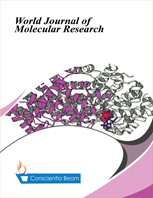Spectrophotometric Analysis of Deproteinised Supernatant Mediated Silver Nanoparticles Synthesis Obtained after Leaf Protein Precipitation: The Molecular Approach
DOI:
https://doi.org/10.18488/journal.505.2019.21.1.10Abstract
In order to study the cellular nanoparticles, leafy tissues fractionated to juice during which the upper supernatant obtained is deproteinised juice. This supernatant consists of the majority of the disposed nutrients passed through the juice by heating and isolation of leaf protein of the green crop. Silver nanoparticles has attracted much attention because of their unique shape-dependent optical, electrical, and chemical properties, have potential applications in biomedical proteomic molecular research. An attempt has been made to the formation of the nanoparticles by reduction of the aqueous metal ions during exposure to the broth of Colocasia, fenugreek, Basella and cruciferous leaves by light microscopy and UV–Vis spectroscopy. In earlier research, deproteinised juice found inhibiting the growth of fungi Trichoderma and cell division in the meristematic root tissues of Allium sp and Celosia argentia. During present investigation, it indicates that the constituents responsible were nanoparticles. Attempts were experimented the detection of nanoparticles in the DPJ prepared from various species. Colocasia DPJ found having spherical, irregular, hexagonal and triangular shaped nanoparticles. DPJ nanoparticles binds enzymes for its activation and interacts with cellular soluble proteins.

